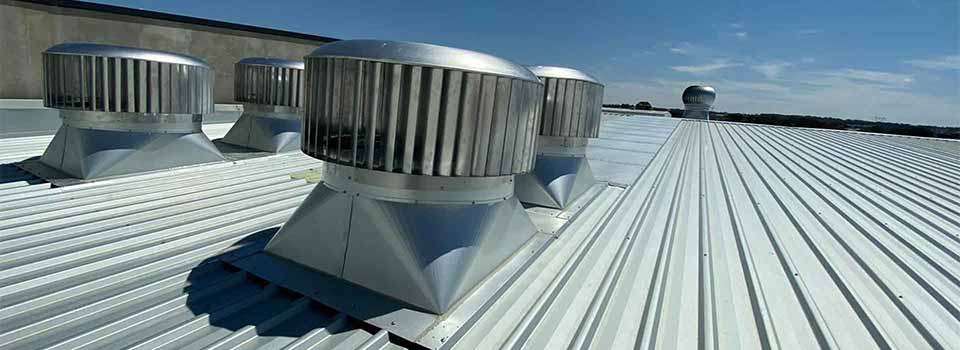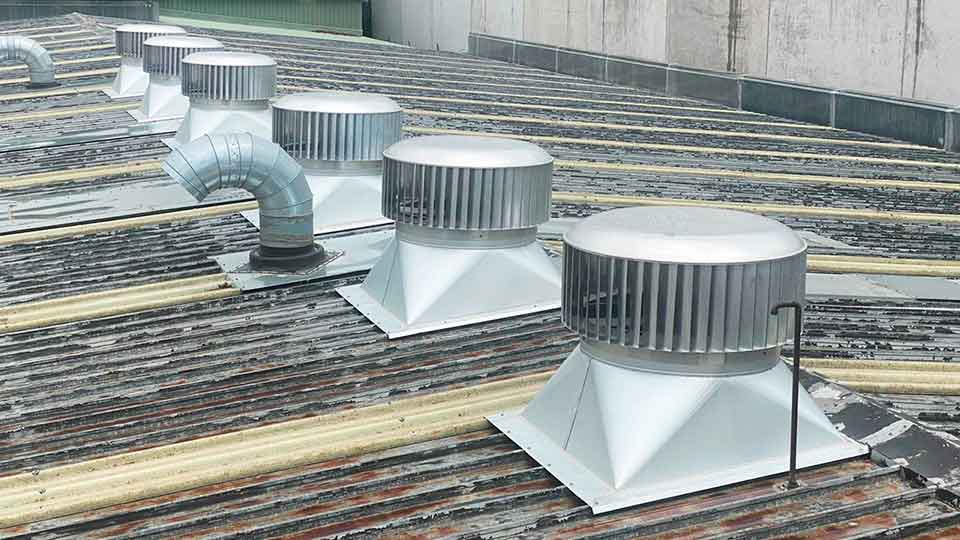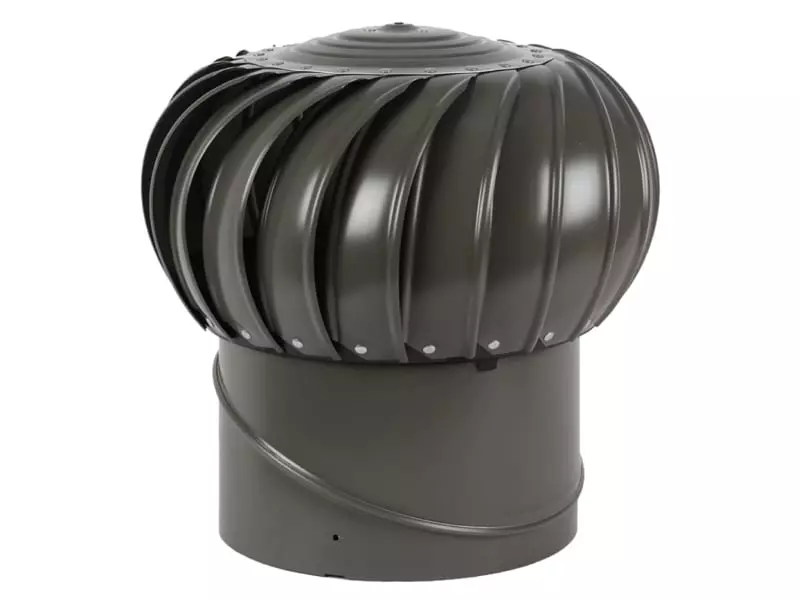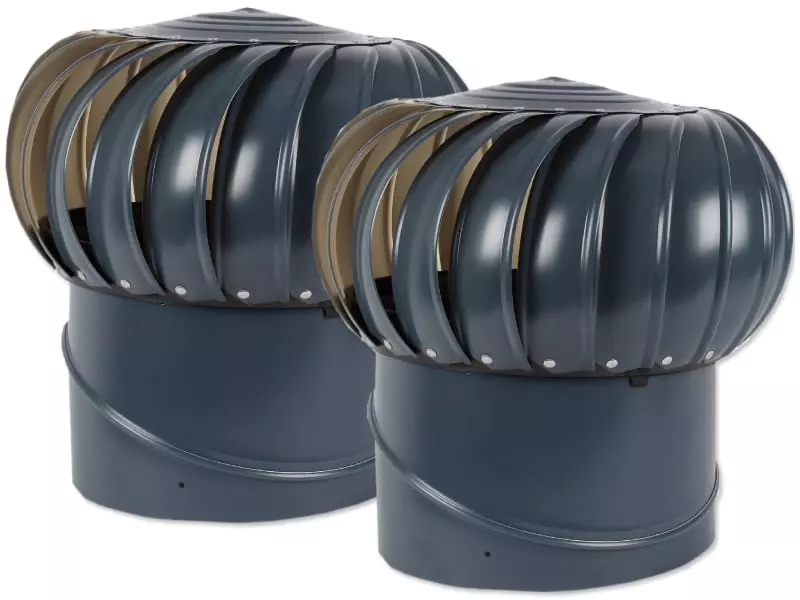What are the Types of Commercial Turbine Roof Vents?
Rain Heads Custom Made Shipped Free Australia Wide – Click Here >
Dambuster Rain Heads Shipped Free Australia Wide – Click Here >
Commercial Industrial Roof Vents 300mm-950mm – Click Here >
Eco-Friendly Roofing Insulation Shipped Free – Click Here >
Gutter Sumps Shipped Free Australia Wide – Click Here >

Commercial Ventilation
Choosing a product for commercial purposes is an entirely different animal to picking things for your home. There are matters of cost and scale that simply don’t apply to residential purchases, so the best product for roof ventilation in your home may not be the best product for your business, even if that product is superior in terms of what it does.
Businesses have to factor in the bulk cost of an item. It’s not enough that a particular roof turbine is better at providing ventilation than another roof turbine that is half the price, the question of how much better is a more significant component, and whether that improvement is worth the cost on what could be dozens, even hundreds of roof turbines. Would it be more cost-effective to get a higher number of cheaper turbines?
With that in mind, we feel that the whirlybird is the best of the available commercial turbine roof vents. On average, it is cheaper to buy than alternatives like solar roof turbines, more effective than entirely passive designs, and does not add any running costs to your utility bills like electrically powered roof turbines. Of course, there are negative aspects to whirlybirds, but taking everything into account, we feel that they are the best commercial turbine roof vents currently available.
That being said, in the interest of giving all the information so you can make an informed decision, we thought we’d take a look at some of the more popular kinds of commercial turbine roof vents and go over their advantages and disadvantages from a business perspective.


Why You Need Roof Ventilation
Let’s start with the basics. You may be wondering why you would need a roof turbine vent in your business at all. The answer is ventilation, and it is vital to any building, big or small. The purpose of roof ventilation is to keep air moving inside the building. This airflow keeps a building healthy by preventing things like mould from taking hold, as well as providing essential cooling during the hotter times of the year. An aspect that I’m sure any Australia-based business will appreciate.
Airflow is achieved by providing an exhaust point at the highest reaches of the building—the roof—where the warmer air inside the building will eventually reach due to warmer air rising. By pulling this rising warmer air out through roof vents and letting cooler fresh air into the building lower down, you create airflow, which in turn keeps moisture from building up and become a breeding ground for damp, mould, and rot.
Free Tactical Knife >
How Roof Turbine Vents Work
The basic premise of a roof turbine vent is simple. They contain a turbine that, when spinning creates suction that pulls air up and through the vent. These vents are then installed in the roof where they are already in an ideal position to catch the rising air and let it out of the building, but the added suction of the turbines can then be used to increase the rate that the air is exhausted to the outside of the building, which in turn increases the rate of the airflow inside.
The turbine in a roof turbine vent can be powered via several different methods, but the functionality of the vent remains the same; air being pulled up through the vent thanks to a spinning turbine.
Solar Roof Turbine Vents
In the case of solar roof turbine vents, solar power is the means by which the turbine is spun. The most significant advantage here is obvious; solar energy is free, and with solar roof vents, you don’t need to worry about the cost of keeping your building ventilated. But how does it stack up for businesses?
The first problem is the expense. Solar roof turbine vents are not the cheapest option on the market, and any businesses with sufficiently large buildings to ventilate will soon feel the sting of that price difference when they start pricing up the cost of fitting enough roof vents to achieve enough ventilation.
The next problem is the solar power itself. While these vents are low maintenance, they do need some maintenance. Most notably, the solar panels themselves. The dirtier those panels get, the less effective the turbine is. This could be extra-concerning for buildings in industrial districts, where the air is more likely to contain things that could be deposited on your solar panel. The cost advantages of not having to pay more on your electricity bill may soon seem like less of an advantage if you have to have the panels cleaned regularly.
Electrically Powered Roof Vents
So what about roof vents that are powered electrically? We’ve established they will cost more in day to day running, thanks to their use of electricity, and they do cost more than whirlybirds in upfront purchase costs. But they are hassle-free when they are running, and provide very good ventilation thanks to the constant and stable power they receive from your electricity supply.
Still, it is hard to overlook the costs. For businesses that might be installing dozens of these turbine roof vents, the cost of buying and running electrically powered roof vents will soon add up.
Ultimate Dog Training System >
Whirlybird/Wind-Powered Roof Vents
Our suggestion for the best of the commercial turbine roof vents, the whirlybird, avoids many of the issues we mentioned above. The whirlybird features a spherical construction of fins up top, and it is these fins that catch the wind and turn in the breeze. That turning of the fins is then used to spin the turbine, which pulls air up from inside the building. Like the solar vents, there are no running costs for wind power, but unlike the solar vents, you do not need to worry about dirt and grime blocking the sunlight. Thanks to this method of powering the turbine, you also do not need to worry about adding to your utility bills. Of course, there are the downsides, which are the unreliable nature of wind and the fact that powered roof turbine vents can—on average—achieve a higher level of airflow. But all things considered, we think these tradeoffs are worth it for most businesses.


1 Roof Vent
Supply & Installation Price
$520/1

1 Ampelite 300 Spinaway
Colorbond or Mill Finish Supply & Installation Price
Download PDF
2 Roof Vent
Supply & Installation Price
$860/2

2 Ampelite 300 Spinaway
Colorbond or Mill Finish Supply & Installation Price
Download PDF
3 Roof Vent
Supply & Installation Price
$1,090/3

3 Ampelite 300 Spinaway
Colorbond or Mill Finish Supply & Installation Price
Download PDF
4 Roof Vent
Supply & Installation Price
$1,300/4

4 Ampelite 300 Spinaway
Colorbond or Mill Finish Supply & Installation Price
